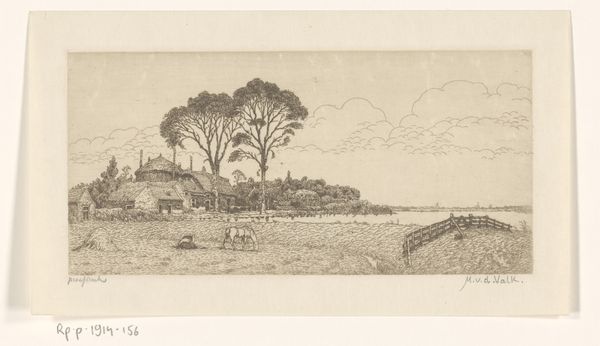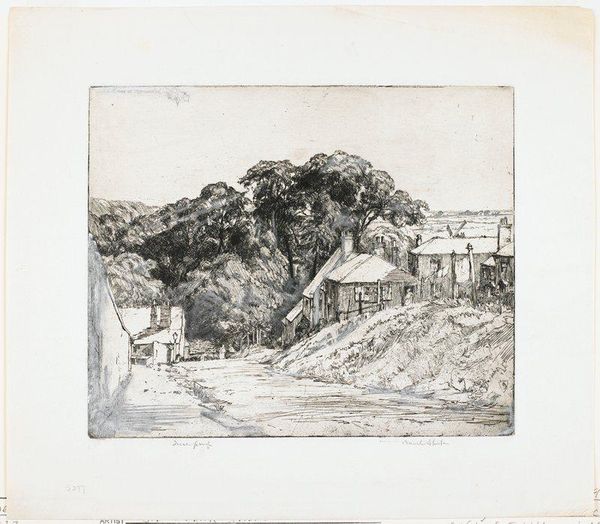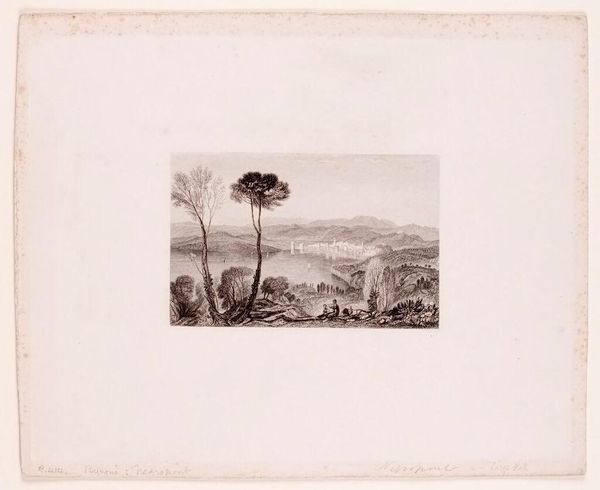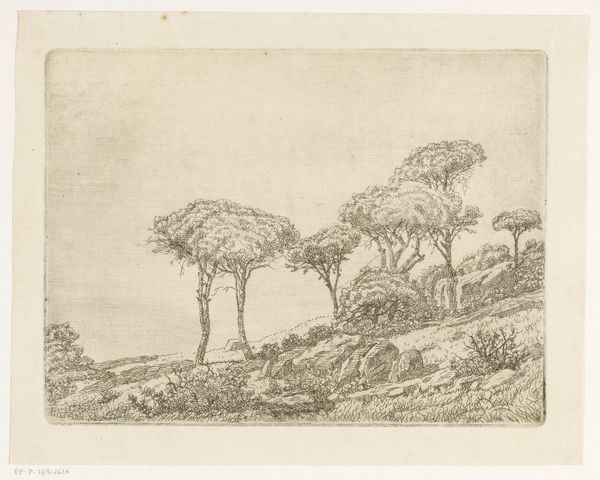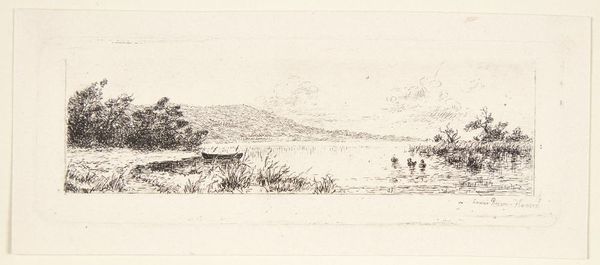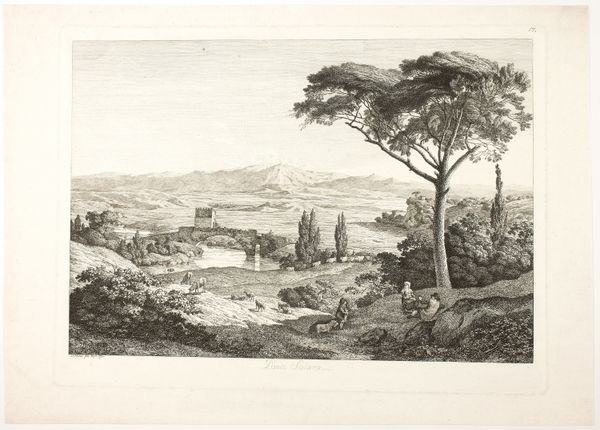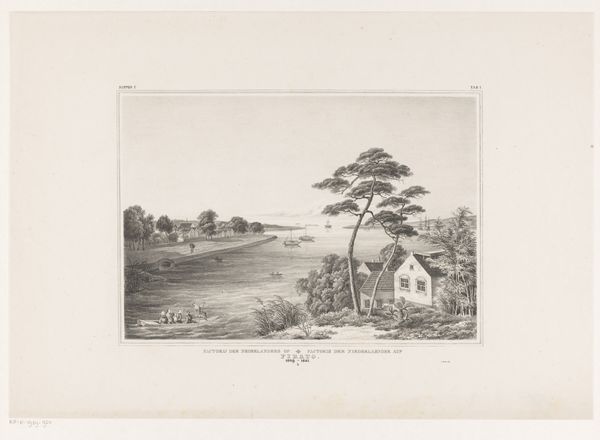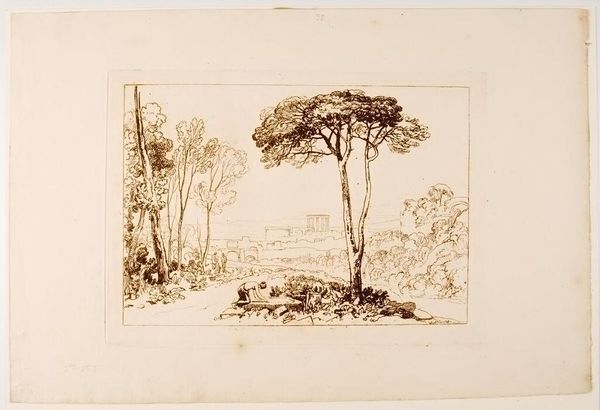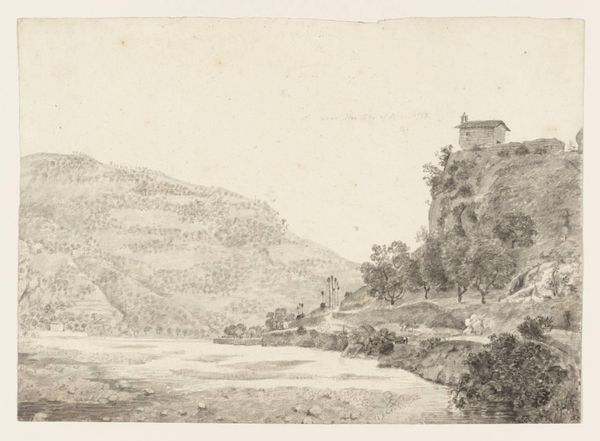
drawing, pencil
#
drawing
#
neoclacissism
#
pencil sketch
#
landscape
#
romanticism
#
pencil
Dimensions: height 274 mm, width 468 mm
Copyright: Rijks Museum: Open Domain
Editor: This lovely drawing is "In the Environs of Genzano," created around 1809-1812 by Josephus Augustus Knip, using pencil. It's so delicate and detailed; I’m drawn to the architectural and natural forms, almost as if I'm getting a peek into a time long past. What do you see in this piece, particularly concerning its construction and its potential for reaching audiences? Curator: It’s fascinating to consider Knip's process here. We have a Neoclassical landscape rendered in humble pencil, which immediately invites us to question the hierarchy between 'high art' and the supposedly lesser status of drawing. He's not working with expensive oils, yet manages to capture a scene from nature with remarkable precision. This act of choosing a common material places an emphasis on skill, on the artist’s hand and its movement. How does that inform our perception of its historical value? Editor: That's interesting! I never thought about how choosing pencil democratizes the process in a way. So, it's not just the image itself, but the accessibility of its creation, right? Like, could the choice of material broaden access or conversation about it? Curator: Exactly! Consider the consumption of art during that period and Knip’s likely audience. The rise of a bourgeois class created a new market for art. Cheaper methods and materials allow for wider distribution of imagery. To whom was this scene ‘available,’ and how does that feed the rise of landscape as a marketable genre? It makes you think, who actually benefitted from images like these? What social narratives do landscape artworks sell, even unintentionally? Editor: That makes perfect sense! I'd never considered art's materials as tools of distribution or potential class statements! It highlights not just *what* is shown, but *how* and for *whom*. Curator: Yes, and by examining the pencil and the paper—the very means of its production—we can uncover so much about the cultural and economic context in which it was made. This understanding helps to reveal both conscious and unconscious levels of visual exchange at the time. Editor: Thanks for shedding light on the materiality and its profound impact!
Comments
rijksmuseum over 1 year ago
⋮
Just like many other artists, Knip fled from the oppressive heat in the Eternal City in the summer months and sought relief in the cooler hills east of Rome. Here he portrayed the surroundings of Genzano, a little town near Lake Nemi. Knip’s inscription on the drawing does not tell us precisely what he drew, possibly a monastery with buildings around a courtyard, and a church at the left.
Join the conversation
Join millions of artists and users on Artera today and experience the ultimate creative platform.

